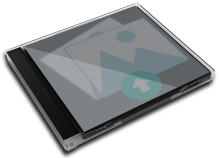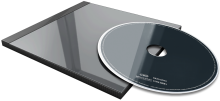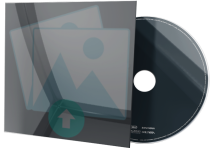
Cover NOT yet available in
Join up for 4K upload/download access
Your Rating (Click a star below)
![]()
![]()
![]()
![]()
![]()
![]()
![]()
![]()
![]()
![]()
Track List
01) 10:15 Saturday Night
02) Accuracy
03) Grinding Halt
04) Another Day
05) Object
06) Subway Song
07) Foxy Lady
08) Meat Hook
09) So What
10) Fire In Cairo
11) It's Not You
12) Three Imaginary Boys / The Weedy Burton
01) 10:15 Saturday Night
02) Accuracy
03) Grinding Halt
04) Another Day
05) Object
06) Subway Song
07) Foxy Lady
08) Meat Hook
09) So What
10) Fire In Cairo
11) It's Not You
12) Three Imaginary Boys / The Weedy Burton
3:40
2:15
2:48
3:39
2:58
1:58
2:25
2:16
2:34
3:19
2:41
4:21
Data Complete 80%
Total Rating
Total Rating
![]() (2 users)
(2 users)
Back Cover
CD Art
3D Case
3D Thumb
3D Flat
3D Face
3D Spine
First Released
![]() 1979
1979
![]() Alternative Rock
Alternative Rock
![]() Gritty
Gritty
![]() Rock/Pop
Rock/Pop
![]() ---
---
![]() ---
---
![]() Album
Album
![]() 0 copies
0 copies
Album Description
Available in:



Three Imaginary Boys est le premier album du groupe The Cure, sorti en 1979. La pochette du disque nous montre trois appareils ménagers, à savoir un réfrigérateur, un aspirateur et une lampe de salon, symbolisant les trois membres du groupe (Lol Tolhurst le batteur pour l'aspirateur, Robert Smith pour la lampe, et Michael Dempsey le bassiste pour le réfrigérateur).
Dans le même esprit, les chansons sont symbolisées par des photos ou des illustrations au dos de la pochette (un crochet à viande pour Meathook, un téléphone pour 10:15 Saturday Night par exemple), ou par des pictogrammes sur l'étiquette centrale du 33 tours, aucun titre n'apparaît jamais.
Comme autre originalité, on peut signaler la reprise du titre de Jimi Hendrix, Foxy Lady, chantée par le bassiste Michael Dempsey.
Le disque est enregistré et mixé dans les studios Morgan situés à Willesden dans le nord de Londres.
Cet album est réédité - notamment pour le marché américain - en 1980 avec pour titre Boys Don't Cry et une liste de chansons et un visuel différents. Il inclut notamment leurs trois premiers singles.
À la fin de l'année 2004, Three Imaginary Boys fait l'objet d'une réédition remastérisée en double CD ("Deluxe Edtion") avec en supplément 20 morceaux rares ou inédits, dont certains de la période Easy Cure.

User Album Review
A fine year for alienation, 1979. The Clash made the apocalyptic London Calling; Manchester's Joy Division debuted with the brutally despairing Unknown Pleasures; Gerry Dammers and co. set the Midlands' malaise to a ska beat with The Specials. Meanwhile, in darkest Crawley, 20-year-old Robert Smith was forging his own take on the post-punk zeitgeist. Twenty-five years on, and in a beautifully repackaged edition, Three Imaginary Boys stands as one of that year's most audacious albums.
Forget about The Cure's later wallowings in gothic gloom and drawn-out suffering. After dark, Fiction Records' boss Chris Parry smuggled his budget-lite band into the studio where The Jam were recording All Mod Cons by day. Smith and the boys used that band's equipment to make midnight hay. From declamatory opener "10.15 Saturday Night", through the power-pop of "Grinding Halt" and the 999-sounding "Foxy Lady" to the lyrically abstract "Fire In Cairo" and psychedelia-tinged title track, TIB maintains a Japanese-water-torture insistence.
Recorded practically live over three nights with few over-dubs, the album is stark, angry and strafed with Smith's urgent guitar. Punk's predecessors and contemporary nightmares made it into the mix - "Object" evokes Ziggy Stardust-era Bowie; "Subway" could be sister to The Jam's "Down In The Tube Station At Midnight". Parry and engineer-cum-producer Mike Hedges gave the collection an icy veneer that upset Smith in 1979, but now feels starkly reflective of its moment.
Disc 2 of this deluxe edition contains twenty previously unreleased Cure rarities from 1977-1979. Home and studio demos track the development of many TIB tracks and of others like "Boys Don't Cry"; out-takes and live versions further mark the band's evolving sound. Smart cover notes reveal the album's genesis and Smith's own thoughts. Exciting, mascara-free and surprisingly upbeat, Three Imaginary Boys captures a key British talent let off the leash for the first time. It also helps recolour a band best known for inky melancholy. Available only in black? On this evidence, The Cure's music was much more than that.
External Album Reviews
None...
User Comments


Available in:
Three Imaginary Boys est le premier album du groupe The Cure, sorti en 1979. La pochette du disque nous montre trois appareils ménagers, à savoir un réfrigérateur, un aspirateur et une lampe de salon, symbolisant les trois membres du groupe (Lol Tolhurst le batteur pour l'aspirateur, Robert Smith pour la lampe, et Michael Dempsey le bassiste pour le réfrigérateur).
Dans le même esprit, les chansons sont symbolisées par des photos ou des illustrations au dos de la pochette (un crochet à viande pour Meathook, un téléphone pour 10:15 Saturday Night par exemple), ou par des pictogrammes sur l'étiquette centrale du 33 tours, aucun titre n'apparaît jamais.
Comme autre originalité, on peut signaler la reprise du titre de Jimi Hendrix, Foxy Lady, chantée par le bassiste Michael Dempsey.
Le disque est enregistré et mixé dans les studios Morgan situés à Willesden dans le nord de Londres.
Cet album est réédité - notamment pour le marché américain - en 1980 avec pour titre Boys Don't Cry et une liste de chansons et un visuel différents. Il inclut notamment leurs trois premiers singles.
À la fin de l'année 2004, Three Imaginary Boys fait l'objet d'une réédition remastérisée en double CD ("Deluxe Edtion") avec en supplément 20 morceaux rares ou inédits, dont certains de la période Easy Cure.
User Album Review
A fine year for alienation, 1979. The Clash made the apocalyptic London Calling; Manchester's Joy Division debuted with the brutally despairing Unknown Pleasures; Gerry Dammers and co. set the Midlands' malaise to a ska beat with The Specials. Meanwhile, in darkest Crawley, 20-year-old Robert Smith was forging his own take on the post-punk zeitgeist. Twenty-five years on, and in a beautifully repackaged edition, Three Imaginary Boys stands as one of that year's most audacious albums.
Forget about The Cure's later wallowings in gothic gloom and drawn-out suffering. After dark, Fiction Records' boss Chris Parry smuggled his budget-lite band into the studio where The Jam were recording All Mod Cons by day. Smith and the boys used that band's equipment to make midnight hay. From declamatory opener "10.15 Saturday Night", through the power-pop of "Grinding Halt" and the 999-sounding "Foxy Lady" to the lyrically abstract "Fire In Cairo" and psychedelia-tinged title track, TIB maintains a Japanese-water-torture insistence.
Recorded practically live over three nights with few over-dubs, the album is stark, angry and strafed with Smith's urgent guitar. Punk's predecessors and contemporary nightmares made it into the mix - "Object" evokes Ziggy Stardust-era Bowie; "Subway" could be sister to The Jam's "Down In The Tube Station At Midnight". Parry and engineer-cum-producer Mike Hedges gave the collection an icy veneer that upset Smith in 1979, but now feels starkly reflective of its moment.
Disc 2 of this deluxe edition contains twenty previously unreleased Cure rarities from 1977-1979. Home and studio demos track the development of many TIB tracks and of others like "Boys Don't Cry"; out-takes and live versions further mark the band's evolving sound. Smart cover notes reveal the album's genesis and Smith's own thoughts. Exciting, mascara-free and surprisingly upbeat, Three Imaginary Boys captures a key British talent let off the leash for the first time. It also helps recolour a band best known for inky melancholy. Available only in black? On this evidence, The Cure's music was much more than that.
External Album Reviews
None...
User Comments

No comments yet...

